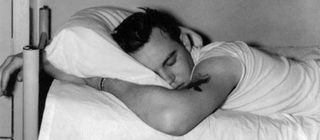Is Restless Legs Syndrome Real?

Though many people who have restless legs syndrome agree the name trivializes the condition, their irresistible urge to shake a restless leg is as real as the need to sneeze.
The neurological disorder affects as many as 12 million Americans, according to the National Institute of Neurological Disorders and Stroke. When people with restless legs syndrome (RLS) are sitting still or lying in bed, they can experience burning, creeping, itching, gnawing, and tugging sensations in their legs.
Some even say it feels as though insects are crawling inside their calves and thighs.
Patients often find relief from the pain when they wiggle their legs.
More than 80 percent of patients also experience involuntary twitches and jerks in their legs. This uncontrollable condition is called periodic limb movement disorder and can exhaust patients and anyone sharing their bed. During the night, the herky-jerky leg moves happen as often as every 10 to 60 seconds.
Many people have written letters to the Restless Legs Syndrome Foundation, complaining that the name, restless legs syndrome, sounds silly and makes the condition hard to take seriously. But the term has a history. It was coined in the 1940s by Swedish neurologist, Karl Ekbom, and is now commonly found in the medical literature. In Europe, the condition is known as Ekbom Syndrome.
If the name restless legs syndrome gives you the creeps, the foundation recommends sticking with the acronym, RLS.
Sign up for the Live Science daily newsletter now
Get the world’s most fascinating discoveries delivered straight to your inbox.
